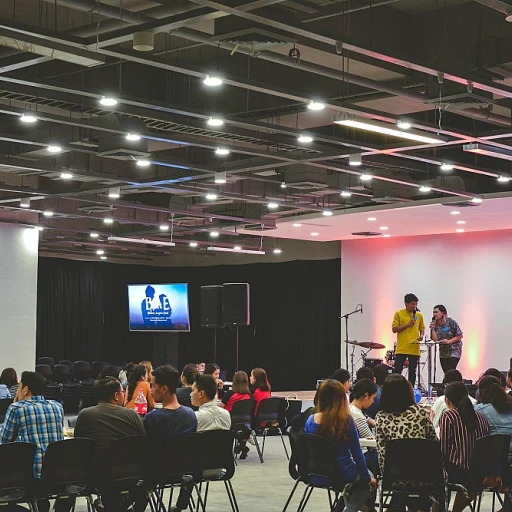Understanding the Candidate Experience
Getting to Grips with the Candidate Experience
Let's face it, the candidate experience isn't just a buzzword—it’s the heart and soul of the recruitment process. Whether you're a job seeker or a hiring manager, the way candidates feel throughout their journey with a company can make or break the employer brand. A positive candidate experience not only attracts top talent but also leaves a lasting impression that can boost the company's reputation.
So, what exactly is the candidate experience? In simple terms, it’s the overall perception a candidate has about a company’s hiring process, from the initial application to the final offer (or rejection). Every stage of the recruitment process plays a role in shaping this experience. Think about the application process, the interviews, and the feedback—each step is an opportunity to engage and impress.
The Emotional Rollercoaster
Imagine applying for a job and waiting weeks without hearing back. Frustrating, right? Candidates often feel like they're in the dark, which can lead to a negative experience. To avoid this, companies need to communicate clearly and promptly at every stage. This not only keeps candidates informed but also shows respect for their time and effort.
On the flip side, when candidates receive timely updates and constructive feedback, they feel valued and respected. This positive experience can encourage them to speak highly of the company, regardless of the outcome. After all, word of mouth is a powerful tool in shaping a company's image.
Building a Strong Employer Brand
A strong candidate experience is a cornerstone of effective employer branding. Candidates today are more informed than ever, often researching a company’s culture and values before even applying. A company that prioritizes a positive candidate experience will stand out in the crowded job market.
Remember, every interaction with a candidate is a chance to showcase the company culture and values. By providing a seamless and respectful experience, companies can attract and retain top talent, ultimately improving their recruitment process.
Stay tuned as we explore how to map the candidate journey and the vital role communication plays in shaping the candidate experience.
Mapping the Candidate Journey
Creating a Visual Path
The candidate journey is similar to a map guiding hopeful talents through the hiring process. Think of it like a road trip -- a well-charted journey can make all the difference. Companies should outline each step candidates will encounter from the moment they hit "apply" to either a heartfelt “yes” or a gentle “not this time.” Creating this map not only helps candidates understand where they're headed but also assists hiring managers in delivering a consistent experience. Imagine the application process as the starting line. Candidates want an easy and welcoming entry -- no winding roads or unnecessary detours. A clear, concise application is like a freshly paved road, ensuring a smooth ride. After applications, the interview stage awaits. Preparation is key. Providing candidates with detailed information about what the interview entails can help ease anxieties. This includes telling them exactly what kind of environment to expect, whether it’s a casual sit-down or a panel discussion. Finally, keep in mind the importance of feedback along the way. Silence can turn into a thunderstorm of doubt for candidates eagerly waiting in the wings. Timely and constructive feedback offers clarity and fosters a positive candidate experience. For more insights on crafting an effective map to improve the candidate journey, check out our detailed blog on "experience candidate map."Simplifying and Streamlining
It's easy for the application process to become clogged with unnecessary info requests and rigorous standards. Simplification is your best ally. Keeping things straightforward and easy to understand makes everyone happier. Review the recruitment methods regularly and trim it down to avoid overwhelming candidates. A user-friendly process respects candidates' time and showcases a company's efficiency. Don't forget that recruitment isn't just about attracting top talent; it's about building your employer brand. A seamless hiring process reflects well on the company and shows potential employees what they might become a part of. This branding can help in attracting candidates through positive reviews and word-of-mouth. Remember, the clearer the journey and the smoother the ride, the better the overall candidate experience.The Role of Communication in Candidate Experience
Importance of Clear Communication
When it comes to the candidate experience, clear communication is like the backbone of a positive journey. Candidates, much like job seekers, want to feel informed and valued throughout the hiring process. Timely and transparent communication turns a vague process into a well-charted path, easing candidates' anxiety and providing a sense of progress. From acknowledging receipt of an application to updating candidates on their status at each stage, communication is key. Employers should consider multiple touchpoints where information is shared: the initial job posting, interview scheduling, and even after feedback is offered. Each interaction serves as an opportunity to reinforce the employer brand and build a positive candidate experience.Keeping Candidates in the Loop
Imagine applying for a job and hearing nothing back for weeks—it’s frustrating, right? This silence can leave candidates feeling undervalued or forgotten. Regular updates, even if there is no final decision yet, help maintain interest and respect for the company. Employers can enhance communication with automated updates or personalized messages from hiring managers. Even using social media platforms as a supplemental tool can help spread updates about the recruitment process, further keeping candidates engaged and informed.Feedback and Its Impact on the Journey
Providing feedback, both positive and constructive, is an integral part of the candidate journey. When candidates are given insights into their performance, it not only helps them grow but also improves their perception of the company. For example, a candidate who didn’t make it to the next stage but received valuable feedback will more likely view the experience positively and may apply for future opportunities. Companies can also learn from the feedback candidates provide about the hiring process, allowing them to refine strategies to improve candidate interactions. For more insights on how to enhance communication in the journey candidate, explore how enhancing the candidate journey with instant feedback can make a world of difference. Every interaction in the recruitment process contributes to shaping the candidate's perception. Therefore, prioritizing efficient and open communication not only reflects a strong employer brand but also attracts top talent and bolsters an organization’s image.Leveraging Technology to Improve the Candidate Journey
Using Tech to Shape the Candidate's Path
It's time to dive into how technology serves as a game changer in the candidate experience. Think of it like putting a jetpack on the hiring process, speeding things up and making life easier for everyone involved. It’s not magic, it’s tech! Let’s face it; job seekers today are pretty tech-savvy. They’ve got a certain expectation when they click on that 'Apply Now' button. Whether they’re applying through a company’s website, a job portal, or even through social media, they expect the application process to be smooth and speedy. Long gone are the days of endless paperwork and waiting by the phone. Here's how technology can upgrade the experience:- Online Application Systems: No more pen and paper. Modern applicant tracking systems help candidates submit documents, fill out necessary forms, and track their progress—all in one place. It’s a win-win for both talent acquisition teams and candidates, keeping the frustration at bay.
- AI-Powered Chatbots: AI isn’t just for sci-fi movies; it’s actively helping recruiters. These chatbots are useful in answering basic candidate questions 24/7, keeping them engaged and informed. They’re like personal assistants, always ready to help.
- Automated Updates: Candidates love to be in the know. Automated email or SMS updates can keep them informed about where they stand in the recruitment process, helping reduce anxiety.
- Virtual Interviews: Thanks to video conferencing tools, interviews are now more flexible not just for hiring managers but for candidates too. They can interview from their comfort zone, leading to a more relaxed and genuine conversation.
- Data-Driven Decision Making: Data analytics isn’t just for number crunchers. It helps identify bottlenecks in the recruiting process, providing insights to recruiters for better decision making.







